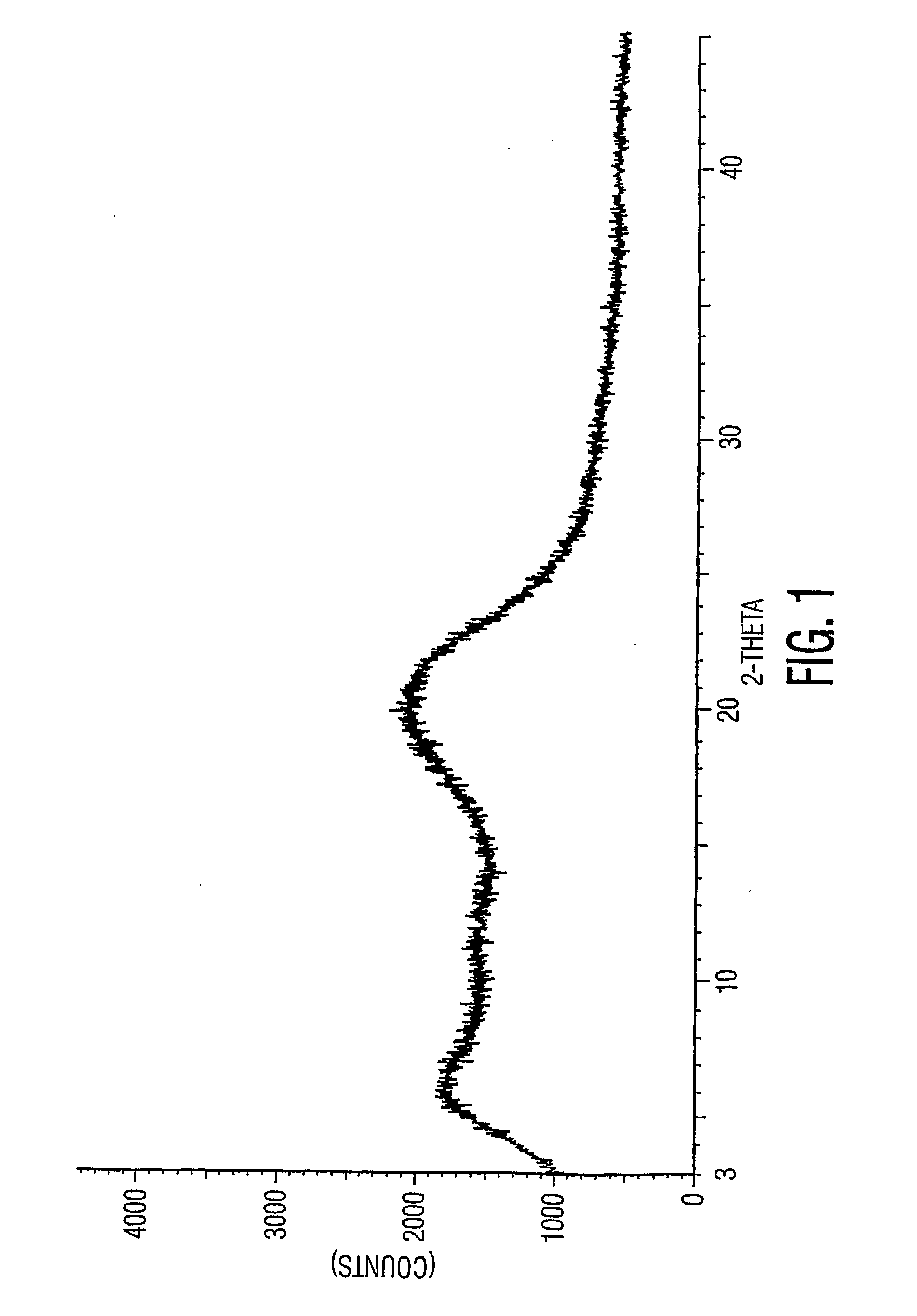Amorphous Aprepitant Coprecipitates
a coprecipitate and amorphous technology, applied in the field of coprecipitates comprising aprepitant, can solve the problems of poor solubility and poor permeability characteristics of aprepitant, high inter-patient variability in the delivery of aprepitant, and poor delivery characteristics, so as to improve bioavailability and improve solubility properties
- Summary
- Abstract
- Description
- Claims
- Application Information
AI Technical Summary
Benefits of technology
Problems solved by technology
Method used
Image
Examples
control example 1
Preparation of Aprepitant and Povidone Mixture
[0082]8 grams of povidone was dissolved in 20 ml of water, 8 grams of aprepitant Form 1 was added to the above povidone-water solution and heated to 65-70° C. for 45 minutes. Solution was cooled to achieve a temperature between 0-5° C., stirred for 2 hours and then was filtered to separate the solid.
control example 2
Preparation of Amorphous Aprepitant
[0083]35 grams of aprepitant was dissolved in 300 ml of tetrahydrofuran to get a clear solution. This solution was spray dried using a spray drier (Jay Instruments & Systems Pvt. Ltd. India, Model LSD-348-PLC) maintaining feed rate at 110 ml per hour, aspiration rate at >1600 RPM to maintain negative pressure of 110-130 mm water, inlet temperature at 140° C., outlet temperature at 80° C. and atomization air pressure at 2.2 kg / cm2. 20 grams of dried substance was collected.
[0084]The XRD pattern of the sample demonstrates the amorphous nature as shown in FIG. 1.
[0085]The following examples will further illustrate certain specific aspects and embodiments of the invention in greater detail and are not intended to limit the scope of the invention.
example 1
Coprecipitate of Aprepitant with Povidone in a Ratio of (1:1) Using Dichloromethane as the Solvent
[0086]1 gram of aprepitant and 1 gram of povidone (PVP K30) were dissolved in 200 ml of dichloromethane with the aid of heating to a temperature of 40° C. The solution was filtered in the hot condition and the dichloromethane was removed using distillation in a Buchi Rotavapor apparatus under a vacuum of 0-20 torr. 1.8 grams of a dried coprecipitate of aprepitant with povidone was obtained.
[0087]FIG. 2 is the XRD pattern of the product, demonstrating the amorphous nature of the coprecipitate.
PUM
| Property | Measurement | Unit |
|---|---|---|
| solubility | aaaaa | aaaaa |
| solubility | aaaaa | aaaaa |
| solubility | aaaaa | aaaaa |
Abstract
Description
Claims
Application Information
 Login to View More
Login to View More - R&D
- Intellectual Property
- Life Sciences
- Materials
- Tech Scout
- Unparalleled Data Quality
- Higher Quality Content
- 60% Fewer Hallucinations
Browse by: Latest US Patents, China's latest patents, Technical Efficacy Thesaurus, Application Domain, Technology Topic, Popular Technical Reports.
© 2025 PatSnap. All rights reserved.Legal|Privacy policy|Modern Slavery Act Transparency Statement|Sitemap|About US| Contact US: help@patsnap.com



